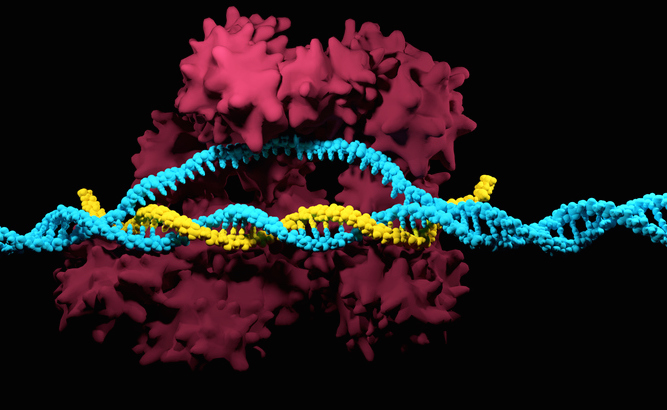
Nobel laureate Jennifer Doudna will lead a Danaher and Innovative Genomics Institute (IGI) collaborative center that will use CRISPR gene-editing technology to develop treatments for rare and other diseases. The center, called the Danaher-IGI Beacon for CRISPR Cures, will use CRISPR-based gene editing via a unified research, development, and regulatory approach to permanently address hundreds of diseases.
Other IGI staff that will help lead the new center include Fyodor Urnov, IGI’s director of Technology and Translation. Both Urnov and Doudna are professors at UC Berkeley.
Danaher, a leader in life sciences and diagnostics innovation, will provide a range of technologies and solutions for the creation of CRISPR-based therapies and will also work to develop new technologies and approaches to simplify and standardize preclinical and clinical development.
Danaher’s Beacons program was established to fund pioneering academic research that has the potential to be developed into innovative applications for human health. The areas of investment by Danaher Beacons include genomic medicines, precision diagnostics, next-generation biomanufacturing, human systems, and data sciences. The Danaher-IGI Beacon for CRISPR Cures is its largest to date and will allow for the development of new research programs at IGI.
“CRISPR has enormous therapeutic promise, but there is no standard scientific or regulatory framework for how to get it to patients. To take on a challenge this big, we all need to work together with a sense of urgency across academia, industry, and government,” said Rainer Blair, president and CEO of Danaher, in a press release. We are thrilled to join forces with some of the finest scientific minds in gene editing at the IGI, bringing R&D and manufacturing talent, technology, and expertise from across several of our operating companies in an effort to create transformative solutions for incredibly important but too-often underserved patient communities.”
The initial focus of the new center will be to develop gene-editing treatments for two “inborn errors of immunity” (IEI) genetic disorders: hemophagocytic lymphohistiocytosis (HLH) and Artemis-SCID. The collaborators see these two diseases as promising first areas of treatment based on broad patient registries of people suffering from these genetic diseases, as well as a transplant-base administration route for the therapies that circumvents some of the challenges of delivering to the appropriate tissues CRISPR-based therapies.
In total, IEIs cause roughly 500 different genetic diseases and, taken as a group, may affect hundreds of thousand of people worldwide. As with many rare disease there are no large gene-editing trials targeting IEI diseases due to the challenge of testing potential treatments on small population. But CRISPR may can change the paradigm due to its ability to be easily reprogrammed to address specific gene mutations. CRISPR for Cures hopes to exploit this ability by developing a scalable platform that would allow new treatments to be rapidly built for not only IEIs, but other diseases as well.
“It is imperative that the public health impact of CRISPR expand rapidly beyond the initial, modest-in-size cohort of diseases currently pursued by the biotechnology sector,” Urnov noted. “The unique nature of CRISPR makes it ideal for developing and deploying a platform capability for CRISPR cures on demand. Danaher and the IGI are in a unique position to join our respective strengths, build such a platform, and create a first-of-its-kind CRISPR cures ‘cookbook’ that can be used by any team wishing to take on other diseases.”
Added Doudna: “Combining the strengths of the IGI and Danaher companies in this new center is a uniquely powerful way to deliver on the promise of CRISPR cures. We know how to get CRISPR molecules into the tissues where they need to be. We know the patient communities. And we have the world experts on these diseases on our team. What we need is a blueprint describing all the science and technology required to treat a person using CRISPR. Once that is achieved, I am convinced that CRISPR can become the standard of clinical care for many diseases.”













